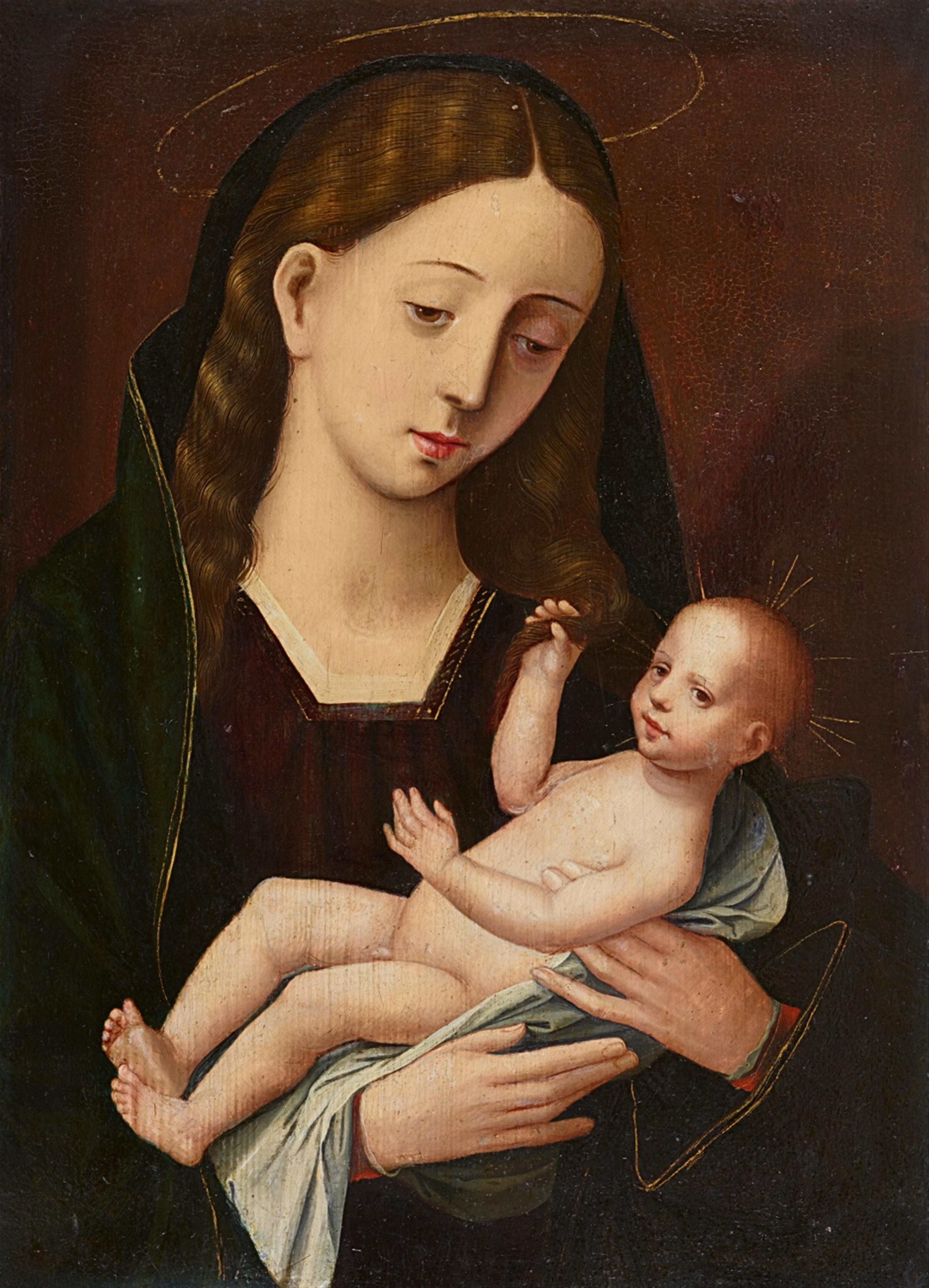Master of the Female Halflengths
The Virgin and Child
Oil on panel. 40 x 28.5 cm.
The “Master of the Female Half Lengths” is an as yet unidentified artist whose name and exact dates of birth and death are unknown. In 1935, Max J. Friedländer attributed a series of 67 works to this master, many of which were half-length depictions of elegantly dressed ladies. He is thought to belong to the generation of artists born around the year 1500 who reached the height of their careers in around 1530. Although his works display stylistic parallels to the Bruges School, he was almost certainly active in Antwerp, where it was more profitable to be a painter. His landscapes are also strongly influenced by those of Joachim Patinir, who was active in Antwerp. The Master of the Female Half Lengths is thought to be one of the many artists from Bruges who moved to Antwerp in the early 16th century.
Half-figure depictions of the Madonna such as this one, often in miniature, make up much of this artist's oeuvre. Many comparable works can be found in Spanish collections, such as the Museo Lazaro Gardiano in Madrid or the Museo Arqueologico Provincial in Burgos. The present work was previously housed in Spain in the Convento de Santa Anna in Avila until the convent was dissolved, whereupon the painting was transferred into private ownership and subsequently found its way to Germany.
Provenance
Convento de Santa Anna, Avila. - Following the disollution of the cloister; private collection Madrid, 1971. - By descent to a private collection in Frankfurt in the late 1970s. - German private collection.
Literature
M. J. Friedländer: Die Altniederländische Malerei 1924, vol. XII , p. 172, no. 61. - Jesús Hernández Perera: Museo Espanol del Maestro de las medias Figuras. In: Goya. Revista de Arte, número 49, Madrid 1962, no. 3.

